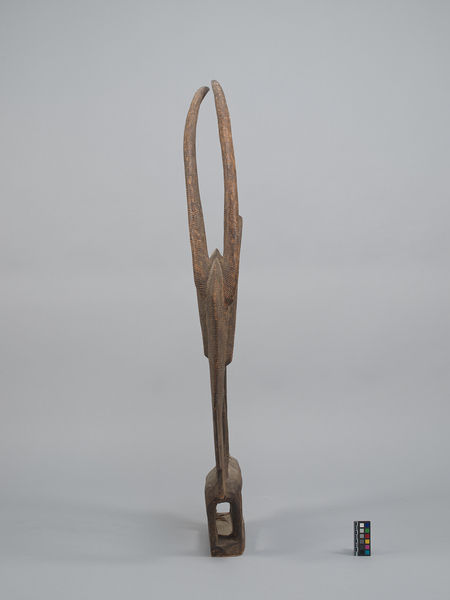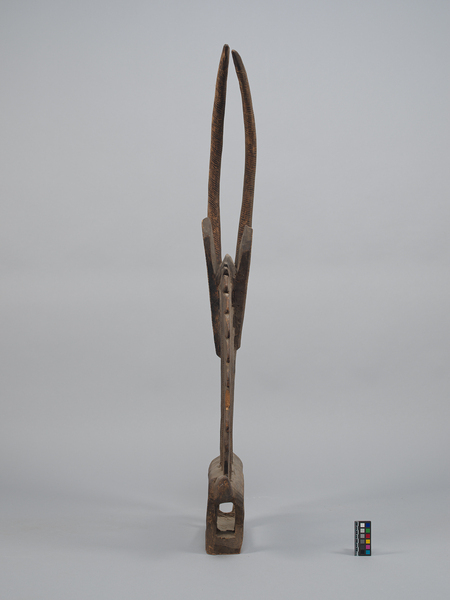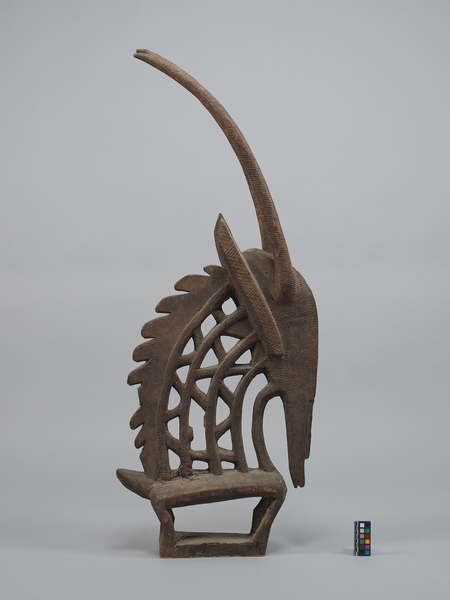Headdress Item Number: 3595/11 from the MOA: University of British Columbia




Description
Antelope headdress. Wooden carving depicting an antelope-like animal with a large head, neck, horns, and small body and legs on a rectangular base. The body and legs are smooth, while the neck, head, and horns are decorated with incised lines, diamonds, and dots. In the centre of the neck, triangles are cut through the wood. Curved shapes stick out from the back of the neck, resembling fur or a mane. The front of the neck has a U-shape cut through the wood. The long horns curve backward and are incised with curved lines.
History Of Use
Chi Wara (or Tyi Wara, etc.) headdresses are made to be danced as a pair (male and female) at harvest festivals to honour Chi Wara, a half human half antelope mythical being who taught agriculture to the ancestors of the Bamana people. The headdresses embody the ingredients necessary for successful cultivation, their long horns representing the tall growth of millet. The headdress is attached to a wicker cap, which is strapped around the chin of a dancer.
Narrative
Purchased by the Art Gallery of Greater Victoria in 1971; sent on longterm loan to the Kelowna Museum (now the Okanagan Heritage Museum) in 1998, then deaccessioned and transferred to them in 2002.
Item History
- Made in Mali
- Owned by Okanagan Heritage Museum before September 14, 2022
- Received from Okanagan Heritage Museum (Transferring institution) on September 14, 2022
What
Who
- Culture
- Bamana
- Previous Owner
- Okanagan Heritage Museum
- Received from
- Okanagan Heritage Museum (Transferring institution)
Where
- Holding Institution
- MOA: University of British Columbia
- Made in
- Mali
When
- Ownership Date
- before September 14, 2022
- Acquisition Date
- on September 14, 2022
Other
- Condition
- good
- Accession Number
- 3595/0011